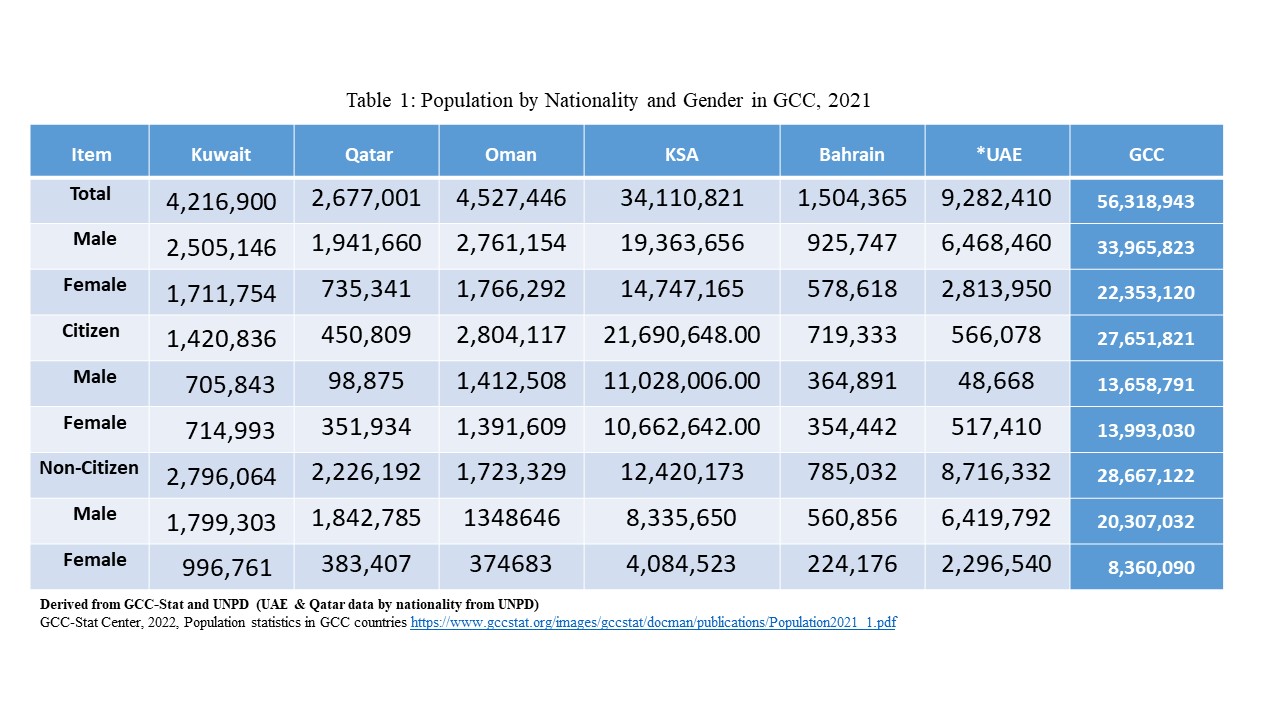The role of expatriate population in overall population growth and structure
Conference
64th ISI World Statistics Congress
Format: CPS Paper
Session: CPS 02 - Aspects of official statistics II
Monday 17 July 8:30 a.m. - 9:40 a.m. (Canada/Eastern)
Abstract
The expatriate population witnessed its crucial role in the development of GCC member states. The significance of mortality and fertility changes to the process of population transition and structure has been widely proven in different demographic research. The six countries of the Gulf Cooperation Council (GCC) - United Arab Emirates, Kingdom of Bahrain, Kingdom of Saudi Arabia, Sultanate of Oman, State of Qatar, and State of Kuwait, are recognized for their high levels of economic development, which have helped in the transformation of their societies and economies. The region has undergone considerable development over the last fifty years. Along with the well-known infrastructure developments and significant improvements in social development, including in health and education outcomes. Much of this development has been heavily dependent on the non-citizen population in the GCC region, so that is why the region had a large movement of temporary workers. The percentage of expatriates has systematically been growing over the last decades in some GCC member states, most of them shorter-term workers while international migration is often seen as a permanent move rather than a complex series of backward or onward movements. (1) GCC-Stat estimates that the population of the GCC in 2021 was 56.4 million (GCC-Stat, 2022), compared to the UN Population Division (UNPD) estimate of 28.0 million in 1998 (UNPD). This was an increase of 28.4 million or 101.4 percent over the 1998-2021 period and represents an annual growth rate of 3.3 over the period. There is also a significant sex difference in the citizen and non-citizen populations. The non-citizen population still remains predominantly male – with a sex ratio (ratio of males to females) of 151.8 in 2021 (GCC-Stat, 2021). This means that males made up 60.3% of the overall population, totaling 34.0 million. There were 22.4 million females or 39.7% of the total population. The working-age population (15-64) is the majority of the non-citizen, with an average of 87.7%. In 2017 with a median age of 30.7 years (GCC-Stat, 2020). In 2020, over 65% is the proportion of employed non-citizens from the total employed. However, there are clear signs that there is an impact of the covid-19 on regular movement and impact on the labor market, with decreasing number of employed non-citizens by 5.4% between Q1-2020 to Q3-2020. Over the last decades, the reliance of the gulf cooperation council (GCC) countries' economy on the expatriate workforce has increased incessantly. This increase in the demand for expatriates is due to the rapid growth of development in different aspects. (1) Global Migration: Demographic Aspects and Its Relevance for Development, United Nations, Department of Economic and Social Affairs, Population Division, Technical Paper No. 2013/6 (2) Source: The Gulf Cooperation Council Statistical Office for the Arab States (GCC stat)
Figures/Tables
Presentation2

